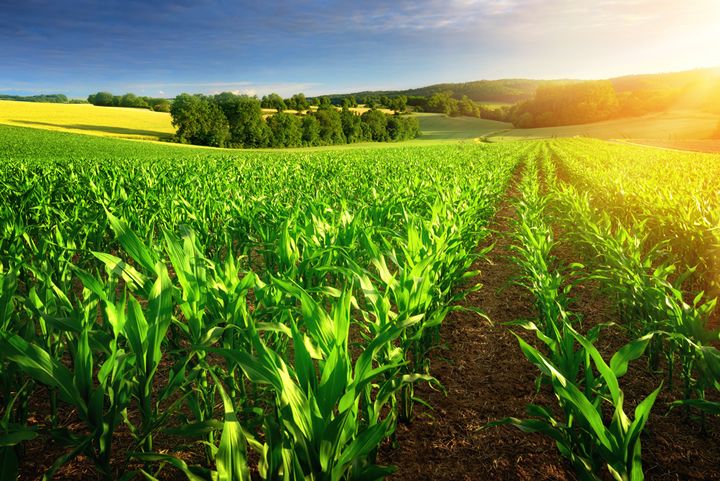Cutting-edge technologies are revolutionizing how we grow food, ensuring a secure and environmentally responsible agricultural system for generations to come. It’s about creating a world of sustainable sourcing.
 Sustainable Sourcing: Committing Regenerative Agriculture
Sustainable Sourcing: Committing Regenerative Agriculture

Christopher Safieh, Vice President | UniSpice
Many of us take the journey vegetables, spices, herbs, and fruits take before reaching our kitchens for granted. The reality, however, is that cultivating high-quality crops goes beyond simply harvesting from a plant.
Numerous factors influence the success of this journey. From the intricacies of soil composition and sunlight exposure to the ever-present threat of unpredictable weather and pests, these challenges can significantly impact yield and quality, highlighting the need for innovative and sustainable practices.
Cutting-edge technologies are revolutionizing how we grow food, ensuring a secure and environmentally responsible agricultural system for generations to come. It’s about creating a world of sustainable sourcing — one that requires us to explore the complex relationship between farmers and the environment.
The challenges of growing crops
While the result might seem simple — a shelf full of vegetables — the journey from seed to harvest is fraught with challenges that are not limited to a farmer's intuition or experience. Numerous external factors can significantly impact crop yield and quality, and Mother Nature also plays a major role, as unpredictable weather patterns like droughts, floods, and extreme temperatures can easily threaten a season's harvest.
Beyond the elements, microscopic enemies like pests and diseases can quickly decimate crops. Even the foundation of a healthy harvest — the soil itself — can be depleted of vital nutrients over time, reducing a plant's ability to thrive. These are just a few of the ongoing battles farmers regularly face, highlighting the need for innovative solutions that promote improved crop health and environmental sustainability.
Other challenges related to the agricultural sector involve various socio-economic factors, such as fluctuating market demands and price volatility that only make the role of farmers more complex, as they must navigate these uncertainties while striving to maintain profitability. Access to resources such as water, land, and capital can also be limiting factors, particularly for small-scale farmers in developing regions. Global issues like climate change and population growth intensify the pressure on agricultural systems to produce more with fewer resources.
In the face of such multifaceted challenges, collaboration between farmers, researchers, policymakers, and consumers becomes imperative to foster resilience and sustainability in agriculture.
The case for sustainable sourcing
Crops are constantly affected by changes in their local climate. For instance, the 2021 heatwave in New Mexico impacted the red chili spice harvest, while flooding in California for the past three years has affected many crops like lettuce and avocados. These events highlight the critical need for sustainable sourcing practices.
Sustainable sourcing goes beyond simply ensuring a consistent supply of our favorite vegetables. It encompasses a commitment to minimizing environmental impact while maximizing crop health and resilience. This approach recognizes the delicate relationship between farmers and the environment by fostering practices that nurture the land and protect valuable resources like water and soil.
By prioritizing long-term sustainability, farmers can mitigate the risks associated with unpredictable weather patterns and ensure a more secure future for their farms, their consumers, and the environment. This, in turn, translates to a more stable supply of fresh, high-quality vegetables on our plates while protecting the delicate ecosystems that sustain us.
Beyond sustainability: Regenerative agriculture
Sustainable sourcing is a crucial first step, but innovative practices are pushing the boundaries even further. Regenerative agriculture embraces a holistic approach that focuses on not only maintaining but also actively improving the health of the land by prioritizing practices that rebuild organic matter in the soil — a vital component for healthy plant growth and water retention.
Regenerative agriculture isn't just focused solely on short-term yields but on building a more robust and resilient agricultural system for the future. Techniques like cover cropping and crop rotation promote a thriving ecosystem beneath the surface, teeming with beneficial microbes that contribute to overall soil health.
Studies have shown that these practices can improve crop yields while enhancing water infiltration and reducing greenhouse gas emissions. By focusing on long-term health, regenerative agriculture offers a promising path toward a more sustainable and environmentally responsible food system.
The power of prediction: AI in agriculture
The future of agriculture is brimming with technological advancements, and AI is playing a leading role in revolutionizing how we grow food. Imagine a system that can analyze vast amounts of information, from weather patterns and soil conditions to historical crop yields: this is precisely what AI is doing in agriculture.
By collecting and analyzing agricultural data, AI can predict potential problems before they even occur, such as forecasting the likelihood of a pest infestation based on weather patterns and historical data, allowing farmers to take preventative measures and minimize losses. These predictions empower farmers to make informed decisions throughout the growing season and optimize the use of resources like water and fertilizer based on real-time data and projected needs, leading to increased efficiency while minimizing environmental impact.
While AI isn't a silver bullet, it is nevertheless a powerful tool that can significantly improve farm management, reduce risks, and contribute to a more sustainable food system overall.
A brighter future for our plates
The journey from seed to shelf, or farm to fork, is becoming increasingly sophisticated. Sustainable sourcing practices are paving the way for a more secure and environmentally responsible food system.
Regenerative agriculture offers a promising path towards healthier soil, improved crop yields, and a reduced environmental footprint. Moreover, AI technology helps add a layer of predictability and efficiency to regenerative agriculture practices, empowering farmers to make informed decisions and navigate the ever-present challenges of agriculture.
As consumers, we all play a role in shaping the future of our food system. By supporting companies committed to sustainable practices, we can collectively encourage a shift towards a more responsible way of growing the food we love.
The future of agriculture is bright, brimming with innovation and a commitment to environmental well-being. This translates to a brighter future for our plates, ensuring a continued supply of delicious, high-quality food while safeguarding the health of our planet for generations to come.
 After earning his MBA at the age of 17, Christopher Safieh joined UniSpice. Together with his partner, Allan Safieh, they built upon the idea of making this unpredictable business predictable, sustainable, and scalable. They founded a spin-off to control the source (the farms). Fast-forward to today, and it has become the largest grower in the world of those commodities while at the same time making the industry more predictable, efficient, and sustainable, giving its clients the ability to own their source.
After earning his MBA at the age of 17, Christopher Safieh joined UniSpice. Together with his partner, Allan Safieh, they built upon the idea of making this unpredictable business predictable, sustainable, and scalable. They founded a spin-off to control the source (the farms). Fast-forward to today, and it has become the largest grower in the world of those commodities while at the same time making the industry more predictable, efficient, and sustainable, giving its clients the ability to own their source.
The content & opinions in this article are the author’s and do not necessarily represent the views of AgriTechTomorrow
Comments (0)
This post does not have any comments. Be the first to leave a comment below.
Featured Product

